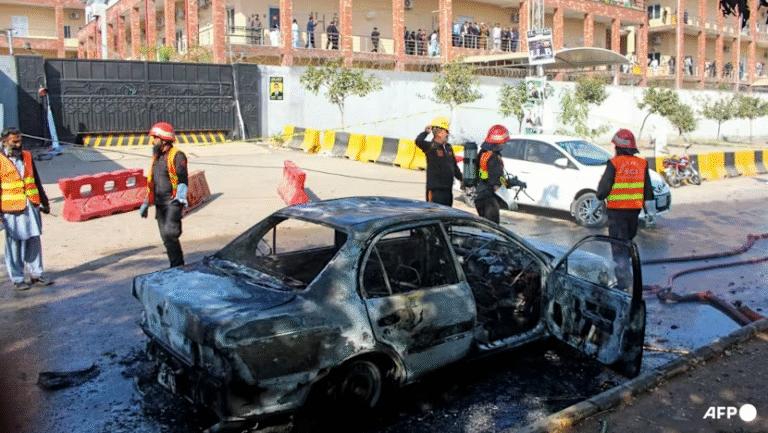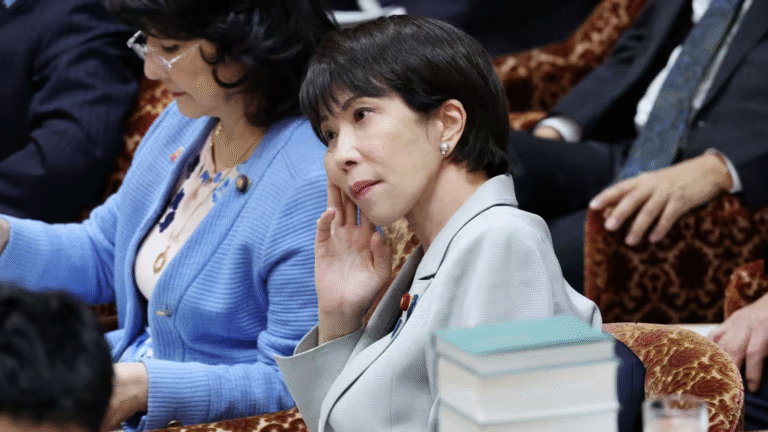
If the bombing turns out to be a terrorist act, India can be expected to retaliate robustly, even to escalate retaliation.
At least nine people were killed and around 30 injured – several of them critically – in an explosion in a moving car in the Old Delhi area of India’s national capital on Monday evening.
There has been no official confirmation so far on what caused the blast. Home Minister Amit Shah said the investigating agencies were probing “all angles” and not ruling out any possibility.
“As on Tuesday morning, no terror group has claimed responsibility for the explosion,” a senior Delhi Police official told The Diplomat. However, “the needle of suspicion points in the direction of terror groups,” he added, speaking on condition of anonymity.
Early on Tuesday, Delhi Police registered a case under the Unlawful Activities (Prevention) Act (UAPA) and the Explosives Act. Sections 16 and 18 of the UAPA address terrorist acts and the penalties for such acts.
Monday’s explosion happened close to the entrance of a metro station serving the Red Fort, a 350-year-old Mughal-era historical site. Old Delhi is home to several heritage sites.
“If the explosion was a deliberate act, then it was meant to create maximum mayhem,” the police official said. “It happened at 6:52 p.m., rush hour on a working day, when thousands of office goers are taking the metro to head back home.” The explosion happened near Chandni Chowk, “a busy and bustling shopping area, and the Jama Masjid.” He added that the area is “communally sensitive.”
According to reports in the Indian media, the car had been parked in the Red Fort area for over three hours before it was driven out. It was moving slowly and then stopped at a traffic signal, where it exploded.
“We heard a very loud noise… Initially we thought it was a cylinder blast since there are so many eateries in the area. As we ran out, we saw car parts strewn around and then we saw flesh and body parts,” an eyewitness told The Indian Express.
The explosion engulfed several surrounding vehicles. At least six cars, four motorcycles and three e-rickshaws caught fire.
The vehicle, identified as a Hyundai i20, changed hands several times. The last owner has been identified as a resident of Pulwama in J&K. The explosion happened a day after the J&K Police recovered nearly 350 kilograms of explosives from two houses in Faridabad in Haryana. Earlier on Monday, security agencies claimed they had busted a terror module, involving the Jaish-e-Mohammed and the Ansar Ghazwat-ul Hind, terrorist groups that are based in Pakistan. No link has yet been established between these developments as yet.
Delhi is no stranger to terrorist attacks. Its markets, monuments, and public transport have been targeted repeatedly for decades. The Red Fort has been targeted as well. Its symbolic association with India’s independence – it is at the Red Fort that Indian prime ministers hoist the national flag and deliver their address to the nation on Independence Day annually – makes it an attractive target to anti-India militants. On December 22, 2000, Lashkar-e-Taiba militants opened fire inside the complex, killing two security personnel.
Monday’s explosion in Delhi happened nearly seven months after the Pahalgam terrorist attack.
On April 22, 26 civilians, all of them men and mostly Hindu, were shot dead at a tourist site at Pahalgam in J&K by terrorists of The Resistance Front. That attack set in motion a series of dangerous developments. Kashmiris and Muslims were targeted by Hindutva mobs across India. Prime Minister Narendra Modi’s government, which blamed Pakistan for the attack, launched Operation Sindoor, a series of military strikes on terrorist camps in Pakistan-administered Kashmir and in Pakistan. With Pakistan retaliating, the clashes that extended over three days quickly escalated, bringing the two countries, as some claimed, to the brink of a nuclear war.
Kinetic action against Pakistan in response to major terrorist attacks on Indian soil by Pakistan-backed terrorist outfits is not new. The Modi government conducted “surgical strikes” in Pakistan-administered Kashmir in 2016 after the attack on an Indian Army brigade headquarters at Uri. It carried out an air strike on a Jaish-e-Mohammed camp in Balakot in Pakistan’s Khyber-Pakhtunkhwa in 2019 following the suicide attack on an Indian paramilitary convoy at Pulwama. Its response to the Pahalgam terrorist attack, however, marked an unprecedented escalation.
As Modi declared, “Operation Sindoor has redefined the fight against terror…setting a new benchmark and a new normal in counter-terrorism measures.”
If the explosion in Delhi is found to be an act of terror and with links to Pakistan, how will India respond? India has repeatedly stressed in recent months that any future terror attack on Indian soil that emanates from Pakistan-based or backed groups will be considered “an act of war.”
Will the Modi government now escalate its retaliation further?
The 2019 suicide attack at Pulwama was evidence that the “surgical strikes” in Pakistan-administered Kashmir in 2016 had not deterred either the terrorist groups or Pakistan from carrying out attacks in India. The Pahalgam attack indicated that the strikes on Balakot in 2019 had not deterred them either.
If the explosion in Delhi is indeed a terrorist attack by Pakistan-based groups, it underscores yet again that Indian kinetic action against Pakistan does not work to make the latter mend its ways.




